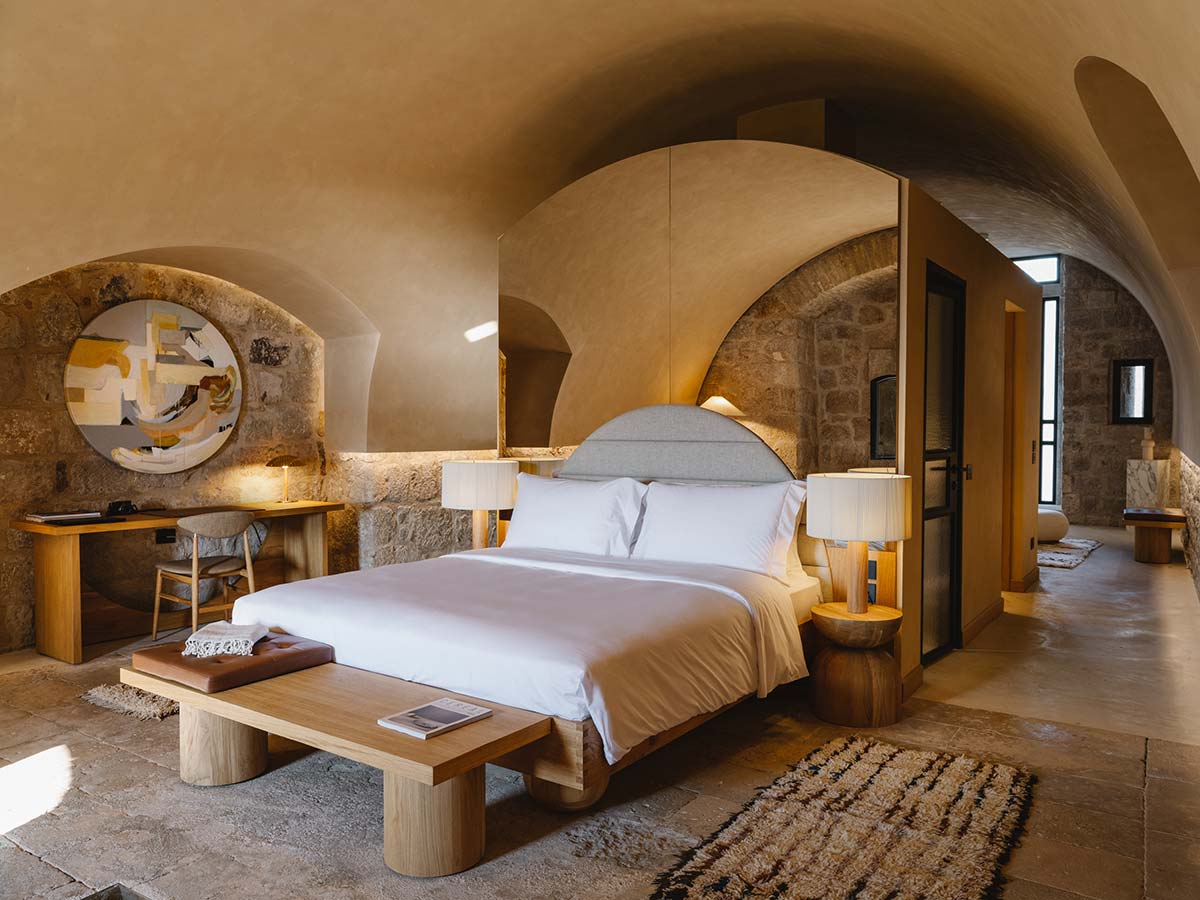DATA SHEET
Owner: OHM Mamula Montenegro, Orascom Development Holding
Hotel operator: Orascom Hotel Management
Architectural design: Miguel Cancio Martins – MCM
Interior design: weStudio, Piotr Wisniewski
Furnishings: Roda, Gubi, Menu Space
Lightings: Flos, Santa&Cole, Gubi
Photo credits: courtesy weStudio & Design Hotels
By definition, abandoned lands once belonged to someone. They may fall into disuse, but they can also be shadowed by their past for years, decades, even centuries. In the Bay of Kotor, one of the most beautiful landscapes in the world and Montenegro’s main tourism gateway, the islet of Mamula has long attracted curious tourists to its ruined yet impressive and picturesque fortress. Originally built in the mid-19th century as part of a gulf defensive system at the behest of its namesake Austrian General Lazar Mamula, the fortress became a prison camp during World War II.
Mamula Island and its fortress, now a UNESCO World Heritage Site, are part of a tourism-based revitalization that is precious for the region, redeeming the island from its cumbersome fascist past by transforming it into a luxury hotel complex.

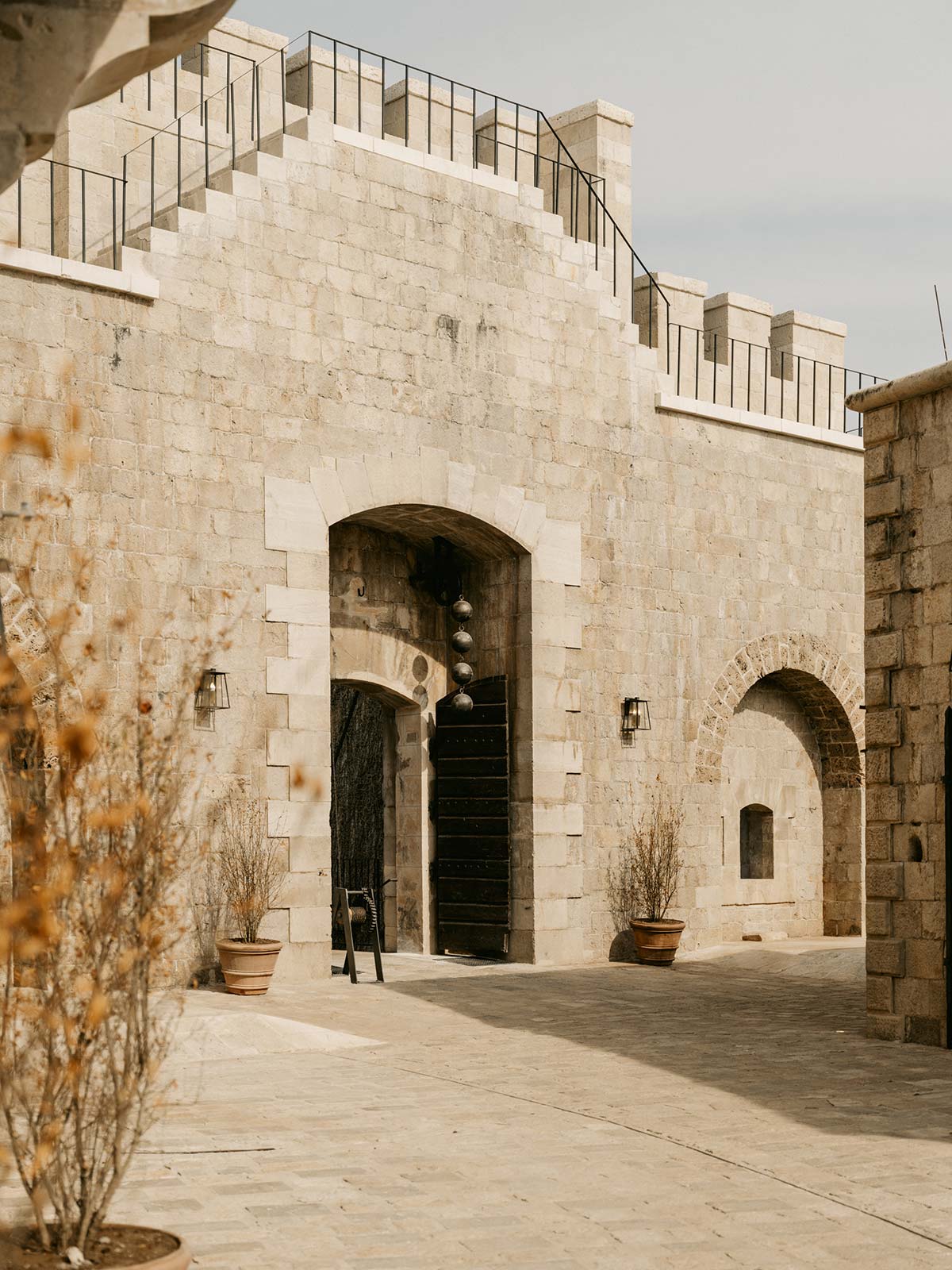

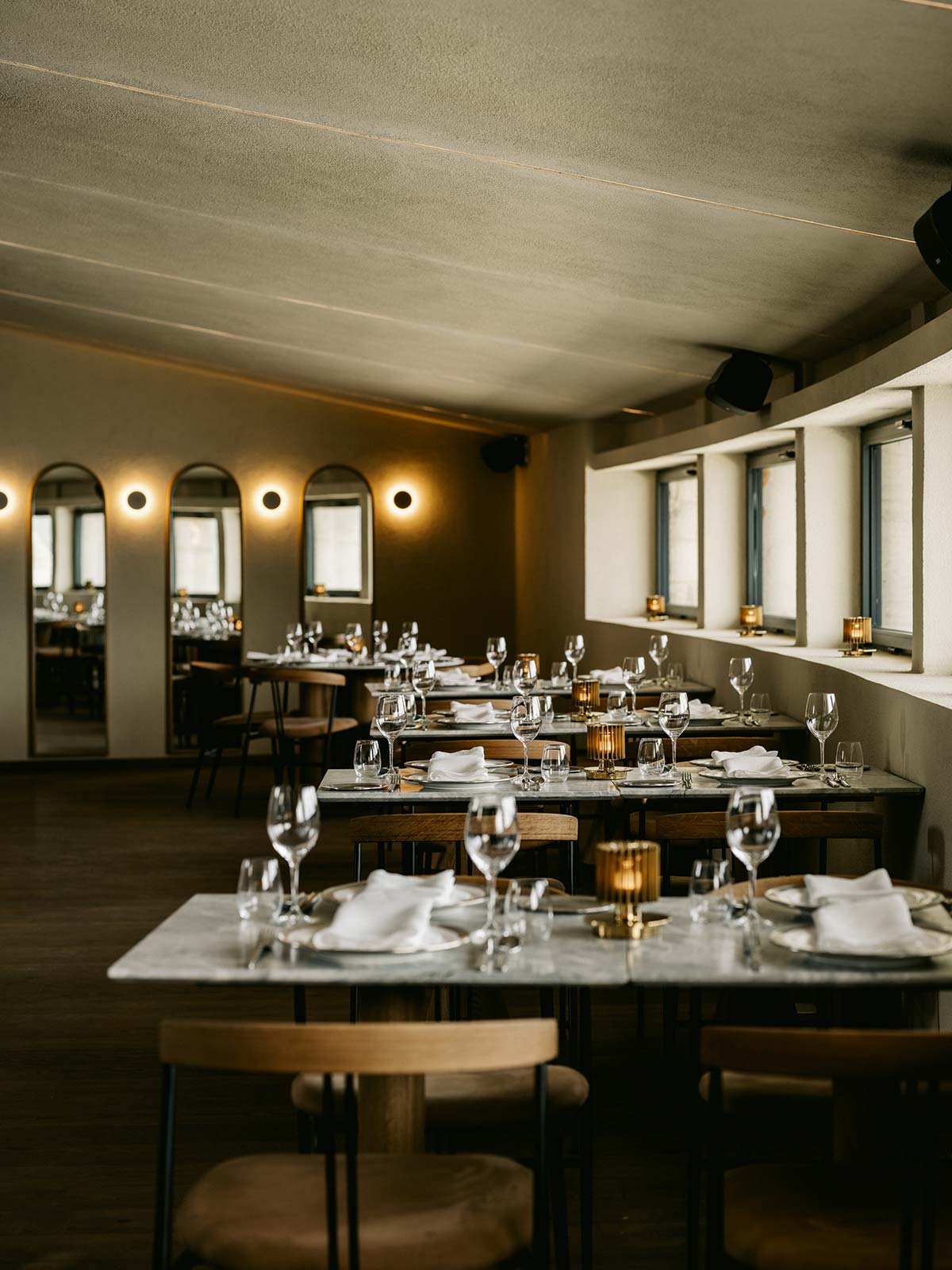
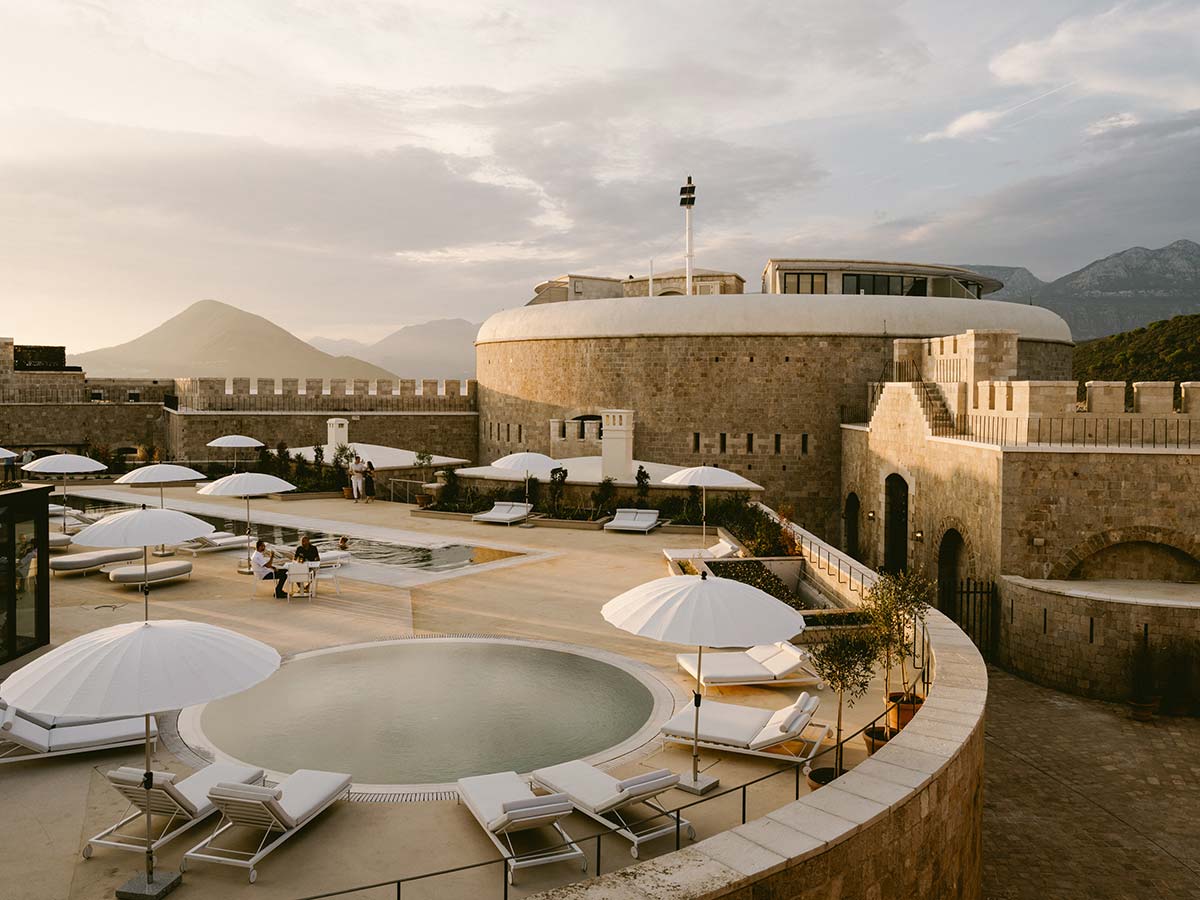
Lisbon studio MCM, who led the architectural restoration project, restored the original beauty of the Austro-Hungarian building, and Berlin-based weStudio took a holistic approach in redesigning the interior. The resort has 10 rooms, 14 junior suites, and 8 grand suites. Amenities include three restaurants, a luxurious spa housed in the fortress tower, three fresh and saltwater pools, and a fully furnished beach – all surrounded by sea and sky.
WeStudio‘s design includes various cultural references, from local artisan work like ceramics and traditional wooden furniture techniques to minimalist mid-century style and abstract art.
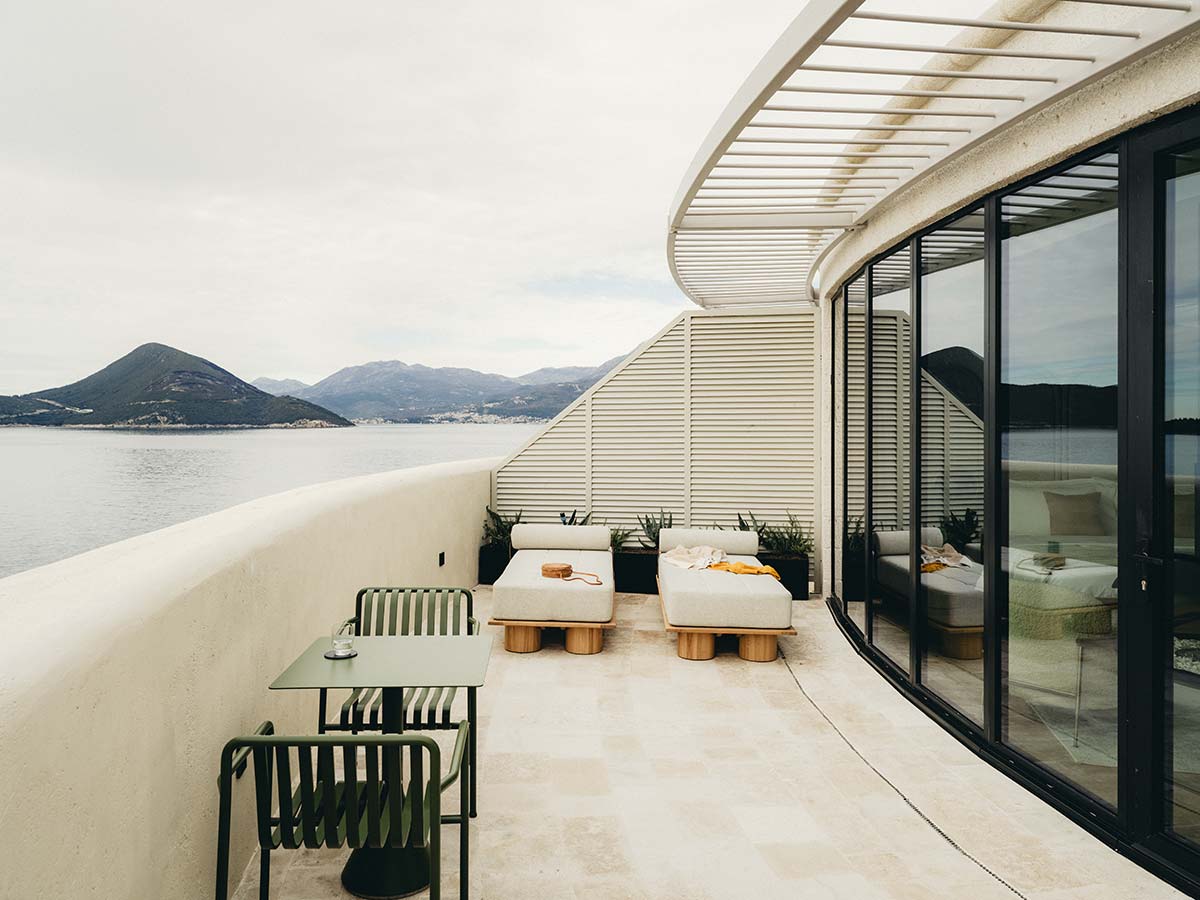
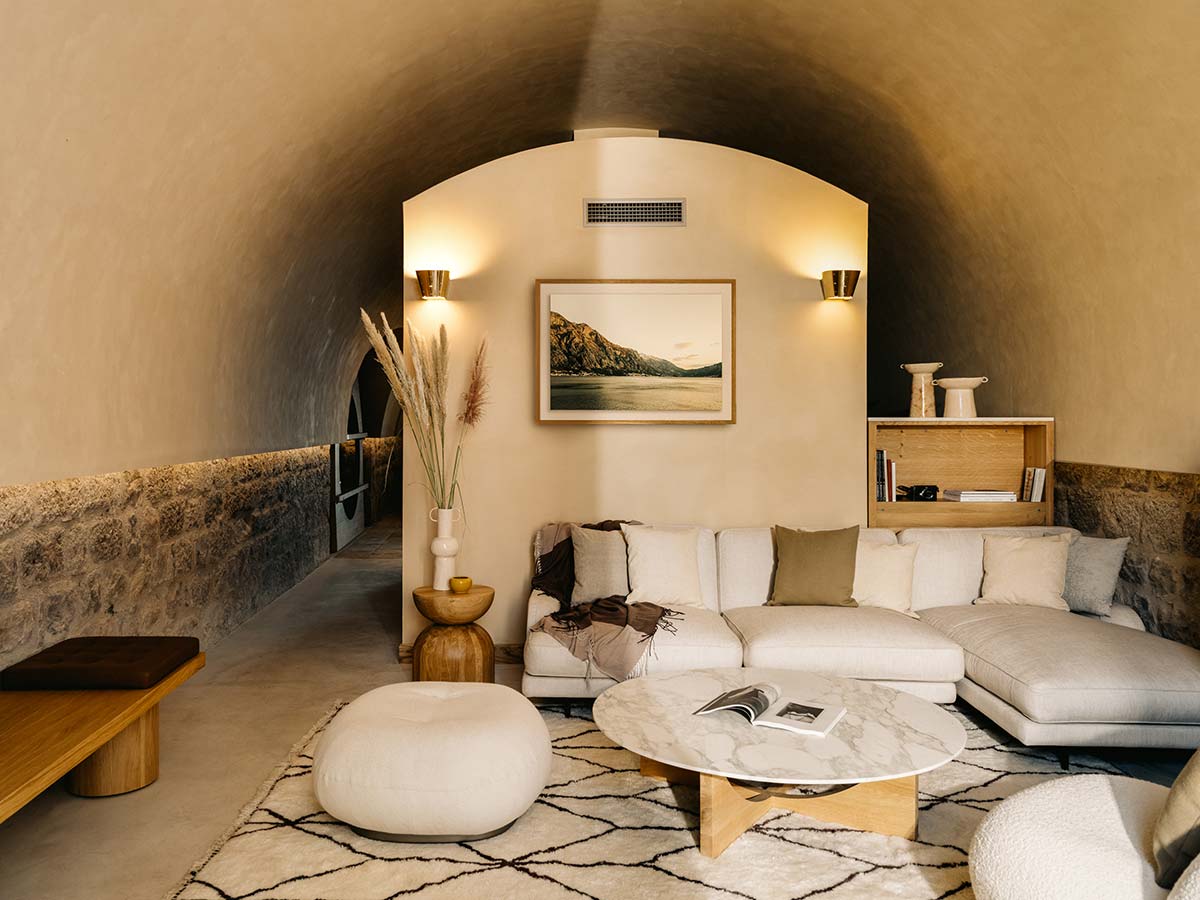
The sophisticated essence of the materials – natural stone, aged brass, solid oak, and organic fabrics – refer to the island’s primordial character and the colors of the vibrant landscape without forgoing more modern design solutions and the occasional contemporary artwork. Although most of the furnishings are custom-made, the rooms and common areas also feature lamps, chairs, and select lounge pieces from Gubi, Roda, Santa&Cole, Flos, and Menu.

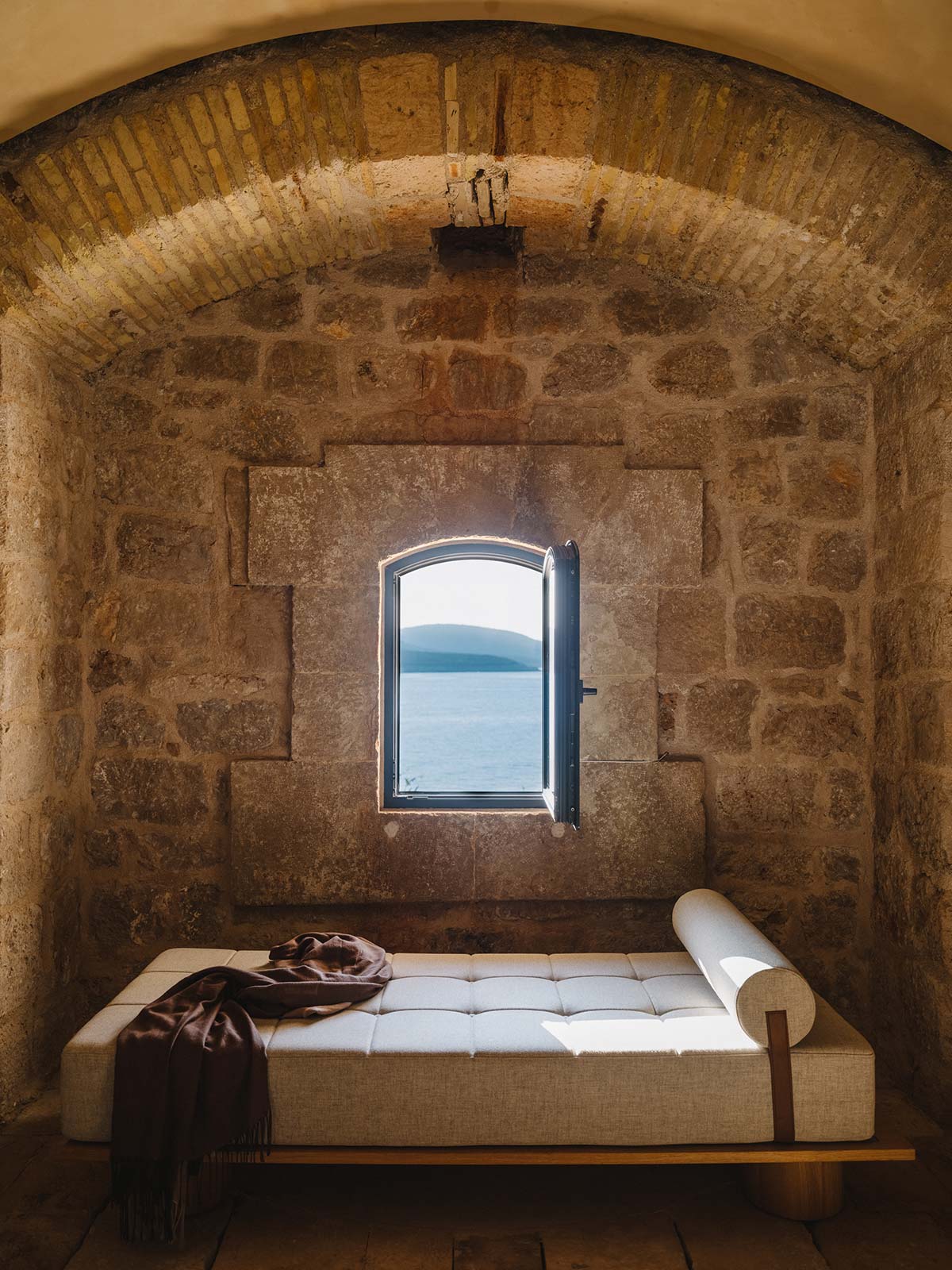
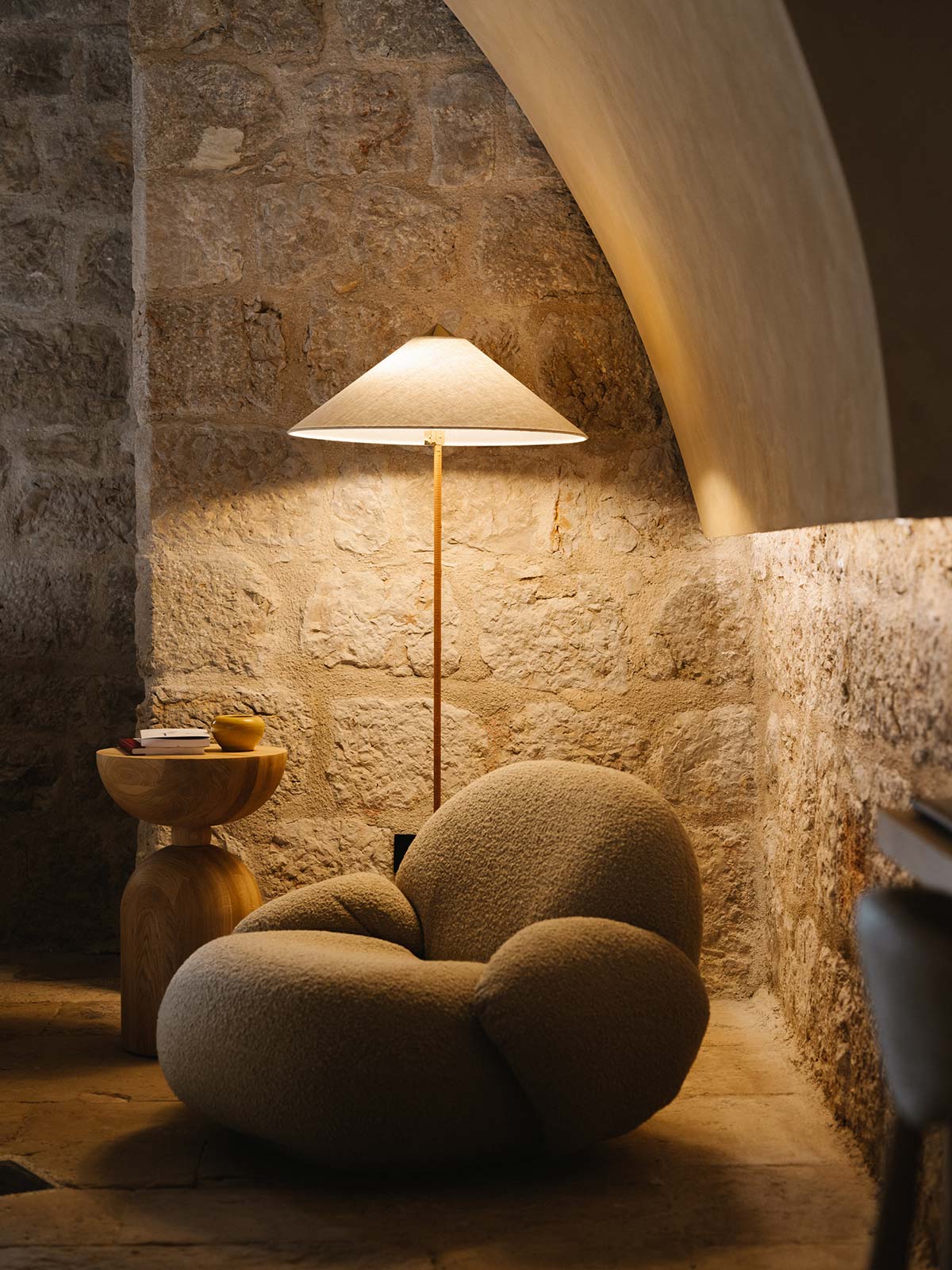
The motif of the arch is the common thread of the overall design. As a symbol of renewal and openness and associated in ancient mythology with spatial-temporal passageways, arches appear in all the interior spaces and even inspired a bespoke line of geometric furniture by weStudio.
